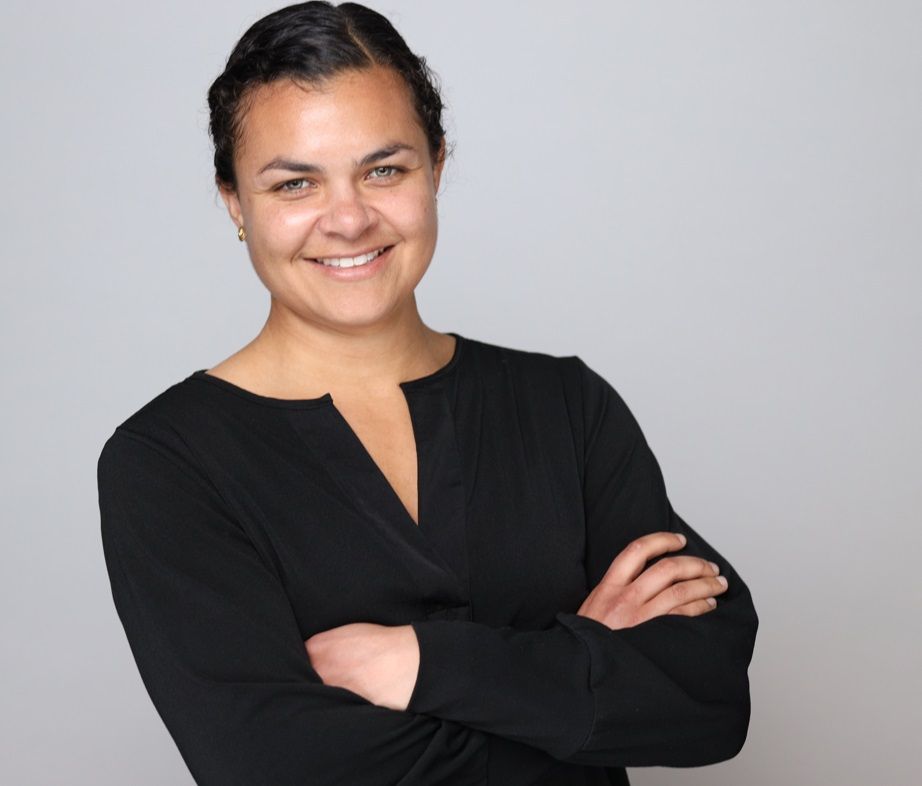Distressed CRE Market Speaker Insights
)
BOB CLIPPINGER, CEO, Clippinger Investment Properties
 What will the 2024-25 distress market look like?
What will the 2024-25 distress market look like?
It will be longer than expected as many investors, sponsors and equity players are unsure of where the bottom of the market lies, and thus are doing all they can to hang on to their assets expecting a quick sign of a turnaround.The future of the market is unknown with varying projections on growth in each asset class.
Cap rates are argued aggressively from both ends of the spectrum leaving institutional investors without a solid barometer with which to make decisions. This leaves many opportunities available to the private equity market. Having a seasoned advisor who has been in the market through several cycles and has managed assets and or portfolios of assets will, at least allow for some perspective for these opportunistic groups.. There are opportunities now but the duration of that window is closing, albeit not suddenly. The Federal Reserve is not moving rates quickly, if at all.
Tell me about the last distressed deal you invested in/looked at.
We are currently under contract on four multi-family and student housing properties in Northern California. These opportunities to purchase below build or replacement costs are directly related to the increase in interest rates and the inability to refinance. Two of these new offerings are Qualified Opportunity Zone investments. We expect that the overall lack of housing in the markets we are investing into will lead to rental increases and marked appreciation. Three of these offerings are modular housing construction which has become very innovative as to the methodology and actual finished product.
What do you think about the Office-to-Residential conversion play?
I think, if played out well, they offer a very interesting layout and amenity rich residential environment. If a building has a true open concept floors then the eventual residential layout can be very appealing. Parking is still a required amenity and as long as that is available that helps ensure the viability. Have you seen any examples of success? Yes, on a smaller scale. I do know of a couple of larger transitions in development not yet completed.
If you were in the midst of building a new office building what would you do?
At the end of the day, it is about the people and the Think twice unless there is a very convincing argument for the available space. There is a lot of available office with motivated owners looking to attract any viable tenant right now. How are your workouts working out? I have not found lenders to be very flexible actually. We have not had significant issues but unfortunately the newer batch of equity group lenders are tied at the waist to the legal counsel so any interruption (such as COVID) has been responded to with legal action rather than reach out to the borrower and get information which would lead to a work out.
The first food group to come back will be…
Multi-family.
Your favorite movie of the year was…
LOL, did not get to a new released movie last year, on demand… Yellowstone is the bomb.
JENNA UNELL Senior Managing Director -Special Servicing Division Greystone Special Servicing
 What will the 2024-25 distress market look like?
What will the 2024-25 distress market look like?
There appears to be significant liquidity available for quality real estate but transactions remain slow with sellers remaining reluctant to realize the necessary value diminution the market currently dictates. The uncertainty in values remains a key impediment to transaction volume. There will be opportunities for rescue capital and/or debt facilities for owners that are facing maturing loans that cannot be refinanced and/or need “cash-in” due to value declines and higher rates.
What do you think about the Office-to-Residential conversion play? Have you seen any examples of success?
This continues to get a lot of airtime but in practicality is rare at best. The cost and logistical/political impediments to redevelopments makes such a project, even if theoretically viable, extremely costly and requires an acquisition price that most seller’s are not willing to accept if there is any other alternative.
How are your workouts working out?
The current workout environment typically involves a short term extension with perhaps additional extension options subject to hitting some established benchmarks e.g. DSCR; debt yield etc. These workouts also require some type of equity contribution which may include reserves for cap ex , TI/LC or PIP requirements or old-fashioned principal paydowns. The lender will expect some demonstration of commitment to the asset. The workout will also typically require cash management for the remaining life of the loan.
The first food group to come back will be…
Tough to say but multifamily will always have a place—other than specific markets which are overbuilt, the multifamily market will be solid but, in many cases, needs to be de-levered.
Your favorite movie of the year was…
The Holdovers.
CHARLES TOURTELLOTTE, President/CEO, Laterra Development LLC
 What will the 2024-25 distress market look like?
What will the 2024-25 distress market look like?
• Office - has the lowest value index at 90. And there is more distress predicted to come as CBRE reports there is $73B in refinance shortfall between now and the end of 2025
• Retail – value index of 108. Retail lowered after Covid but is rising again.
• Multi Family apartments – 115. MF peaked at 133 and dropped as new supply increased and rents and occupancies lowered. Some distress predicted for under-capitalized owners who will need rescue capital. This creates opportunities for well capitalized investors.
• Hospitality – 122. Difficult to peg due to market specifics and operational specialties.
• Industrial – 130. Negligible distress predicted.
• Self-Storage – 139. SS got an initial lift from Covid, but more recently has gone lower with softer rents and occupancies (varies widely by market depending on supply) partly due to overall slower new household growth.
Institutions have raised and allocated Billions of dollars in capital to invest in opportunistic and distressed assets. However, distress will be more limited in most property types than originally thought in this cycle. There is and will likely be, a narrow band of high-risk property types, and overall, distress will be limited this cycle in most property types. According to Marcus and Millichap when current values are indexed against 4Q 19 (pre-Covid) (4Q 10=100): My go forward market prediction is, with lower interest rates on the horizon, investors will be reworking their strategic thesis away from distressed. More focus will shift to upside opportunities over the next 3–5 years. Goldman Sachs Asset Management announced in March, 2024 they will resume “actively investing” in U.S. commercial property this year. The reason they said, is a combination of interest rates coming down and the market bottoming out. They are seeing a floor in prices set by buyers in the market.
Tell me about the last distressed deal you invested in/looked at.
Currently, LaTerra is reviewing and offering to purchase two different Multi Family properties located in our active market areas. Both are pre-C of O, and nearing construction completion, and require construction and development expertise for completion, lease-up and stabilization. The all-in finished offer values are well below the current owner/developer cost basis and achieve strong projected returns.
What do you think about the Office-to-Residential conversion play? Have you seen any examples of success?
LaTerra has evaluated office to residential conversions, but we’ve found the required price of the office building needs to be in the $100-$150/ PSF range in Southern California markets in order to make it economically viable (when considering design challenges and hefty conversion costs), which is often less than the underlying loan amount. With that said, LaTerra is actively converting vacant big box retail into industrial and self-storage in California and Texas markets.
If you were in the midst of building a new office building what would you do?
Look at zoning and consider conversion to industrial or self-storage. The first food group to come back will be… I like self-storage and multifamily residential located in market areas with strong employment growth and constrained supply, along with robust retail.
Your favorite movie of the year was…
Bob Marley: One Love.
CHRIS TOURTELLOTE, Managing Director, Laterra Development LLC
 What will the 2024-25 distress market look like?
What will the 2024-25 distress market look like?
The amount of capital raised for distressed deals is staggering! There is far more capital than there are distressed deals. LPs need example deals for their pitch books. As a result, distressed deals are getting bid way up. Tell me about the last distressed deal you invested in/looked at. LaTerra is looking at several partially completed multifamily projects (in some cases buying the Note from the senior lender).
What do you think about the Office-to-Residential conversion play?
Have you seen any examples of success? Office to residential conversations are difficult to make pencil given high conversion costs. Office buildings need to be purchased at ~$150 psf to make it pencil (which is likely much less than the loan amount). That said, LaTerra is actively converting vacant big box retail into self storage and industrial in California and Texas markets.
If you were in the midst of building a new office building what would you do?
Look to convert it to residential, self storage, or industrial (depending on location and construction type).
How are your workouts working out?
Lenders have been very accommodating on simple multifamily loan modifications (extending maturity dates and waiving DSCR tests, etc).
The first food group to come back will be…
Multifamily (buyers are out in force! 6 months ago, newly completed multifamily asset would get 3-4 bids. Today, new multifamily assets are getting 20+ bids).
Your favorite movie of the year was…
Drops of God (I know, its not a movie… it’s a series, but I loved it!).
RAMIN KOLAHI, Principal, Lighthouse Partners
 What will the 2024-25 distress market look like?
What will the 2024-25 distress market look like?
More price discovery for most assets as market absorbs new rate environment, banks pressing non-performing assets but when Fed actually cuts rates, boost confidence and likely bring billions of opportunity funds into market. Tell me about the last distressed deal you invested in/looked at. Covered office land play, partnership litigation forcing a sale.
What do you think about the Office-to-Residential conversion play?
Costs make it very challenging, Congress needs to progress the Downtown Revitalization Act to create tax credits to unlock many projects. Have you seen any examples of success? Saw some smaller success in turning a small creative office into a co-living operation that seemed to do well.
If you were in the midst of building a new office building what would you do?
Consider life science infrastructure and make sure to build best in class to give best success of leasing absorption and perhaps consider converting to residential (depends how far along in construction)
The first food group to come back will be…
Define “come back”, could be office since more capitulation from sellers.
Your favorite movie of the year was…
Older movie but documentary called The Hornet’s Nest, real footage, soldiers, shows how incredible those men and women are in armed forces, loosing friends regularly but continue on their mission.
MAYA THEUER, CEO, Redwood Residential
 What will the 2024-25 distress market look like?
What will the 2024-25 distress market look like?
Office maturities and broken or cross-collateralized development projects half-finished and in need to rescue capital.
Tell me about the last distressed deal you invested in/looked at.
Land residual values for residential development are negative or at most, half of what they were two years ago.
What do you think about the Office-to-Residential conversion play? Have you seen any examples of success?
Conventional office floorplates don't lend them exceedingly well to residential conversion in the suburban markets. The conversion is less likely than buying for the land and scrapping the existing obselete structures.
The first food group to come back will be…
Multifamily, self-storage, logistics.
Your favorite movie of the year was…
Killers of the Flower Moon!
CHAD CARPENTER, CEO, Reven Capital
 What will the 2024-25 distress market look like?
What will the 2024-25 distress market look like?
Very difficult for borrowers with maturing loans especially office.
Tell me about the last distressed deal you invested in/looked at.
1.4M sf 46 story class A office building sold for $207M leased to AT&T. They moved out when the lease expired. Owner lost 100% of equity $100M. Lender had $207M loan and foreclosures. Spent $16M in carrying cost trying to sell it. Sold it for $4M. The lender lost more than the principal amount of loan due to caring cost total disaster.
What do you think about the Office-to-Residential conversion play? Have you seen any examples of success?
Very viable much bigger opportunity than everybody thinks. We’re working on one now in downtown San Diego. It has been done for a smaller scale. It’ll be much bigger than the future.
If you were in the midst of building a new office building what would you do?
If it was spec, I would immediately stop construction.
How are your workouts working out?
We don’t have any buildings we need to work out.
The first food group to come back will be…
Industrial and data centers.
DARREN CLINE, Managing Director, The TerraCotta Group
 What will the 2024-25 distress market look like?
What will the 2024-25 distress market look like?
Increase in NPL disposition activity on both the bank and private lender side. Struggling assets in existing lender portfolio’s starting to run out of time to stabilize. Tell me about the last distressed deal you invested in/looked at. Large volume of non performing, office loans. Over-levered, multi family loans.
What do you think about the Office-to-Residential conversion play? Have you seen any examples of success?
Viable strategy if structural configuration and floor plates are conducive to conversion from a cost perspective. Have you seen any examples of success? Yes, quite a few although the concept is early in it’s development.
If you were in the midst of building a new office building what would you do?
Amenities and most importantly, deliver a safe environment (easier said then done!) for tenants accessing and leaving the building.
How are your workouts working out?
So far, so good. Structure of capital is paramount here. Is your lending vehicle beholden to a liquidation period that can’t be extended?
The first food group to come back will be…
Multi Family.
Your favorite movie of the year was…
Dune 2.
JASMINE NAZARI Partner, Chief Operating Officer Urban Green Investments
 What will the 2024-25 distress market look like?
What will the 2024-25 distress market look like?
Distress will look less like fire sales and more sophisticated in that it’ll be through recapitalizations and through the secondary markets that we’ll see large deals happening. And it’ll be a lower-case D. I don’t expect a large burst in conventional market, because there is still a lot of dry powder and investors capable of affording to hold their breaths. Deals will be made between LP’s and Sponsors private or banks privately, then publicly recorded.
Tell me about the last distressed deal you invested in/looked at.
Precisely because of surely of close and execution, through a lender, we were able to secure a very special office building at a comfortable basis.
What do you think about the Office-to-Residential conversion play? Have you seen any examples of success?
I think that in office and MF, we are going to see arrays of solutions and innovations out of scarcity and necessity. As a result, office to residential conversion plays will be addressed one by one, but truly the buck stops with cities planners and what they are willing to do to make the momentum and transition as smooth as possible. Dallas is doing it beautifully, San Francisco is not.
If you were in the midst of building a new office building what would you do?
I have no business telling someone else how to do their jobs but I would just once suggest or ask if the builders are focusing on modular or multi-purpose solutions as much as possible; and I’d ask the Sponsor to try to find tenants before continuing, dare I say!
The first food group to come back will be…
I think MF has so many advantages and so few risks, that it’ll come back soonest, literally it’s one sentence away and Sellers will be done holding their breath for low interest rates again. But the most interesting food groups will be retail and industrial.
Your favorite movie of the year was…
Tough call! Three way tie between Poor Things, Dune Two and Origin!

